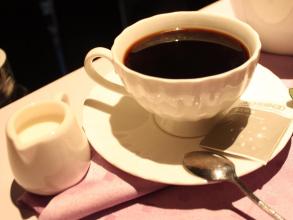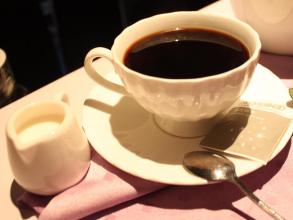Introduction to the characteristics of coffee flavor and taste in Santa Rita Manor, Colombia
Washington lies between Maryland and Virginia. It used to be a shrubby land, with only a few cottages scattered. In 1789, the Confederate government was formally established, and George Washington was elected as the first president. When Congress held its first meeting in New York, there was a heated dispute over the location of the capital, and lawmakers from both sides wanted to locate the capital in their own territory. In 1790, Congress finally reached a compromise, and President Washington chose the natural dividing line between the north and the south-- the area along the Potomac River, which is 16 kilometers long and 16 kilometers wide-- as the address of the capital. and asked the French engineer Pierre Charlang to preside over the master planning and design of the capital, the District of Columbia [2], the land originally came from Maryland and Virginia. When the District of Columbia was founded, the north bank of the Potomac River included Georgetown (Georgetown,D.C.), Washington City (Washington City,D.C.) and Washington County (Washington County,D.C.). In 1878, the three places merged into "Washington," and the District of Columbia and Washington became the same piece of land with dual political significance managed by the same government agency. The comma in its English name indicates its double meaning. When the District of Columbia was founded, the south bank of the Potomac River included Alexandria County, written in Alexandria County (Alexandria County,D.C.), but local residents had always opposed secession from Virginia after many petitions by local residents. The United States Congress passed the bill on July 9, 1846 and the Virginia people's Congress approved the return of land on the south bank of the Potomac River from 1847 to Washington, Virginia by U.S. Army Major Pierre Charles Lakers 39 Planned by Enfant, Pierre Charles Lakers 39 has also designed the Federal Hall in New York. The planning at that time
Washington, D.C. Emblem
Washington, D.C. Emblem
It is based on horse-drawn carriages as a basic means of transportation, so Washington's road system is not suitable for modern motor transportation systems. At present, Washington is regarded as the city with the worst road traffic conditions in the United States. From 1791 to 1792, Andrew Ellicott and Benjamin Banneker, an African-American free man, surveyed the boundaries of the District of Columbia, burying a boundary marker per mile. Many of these boundary markers still exist. The foundation of the White House was laid on October 13, 1792. On August 24, 1814, British forces captured the District of Columbia and burned down most public buildings during the War of 1812. The American army failed to organize effective defenses and fled after burning down the naval shipyard. British troops burned down US government buildings such as the US Parliament, the White House and the Treasury. It is generally believed that the British burned Washington in retaliation for the American invasion and burning of Toronto (known as York at the time)
When it comes to Colombian coffee, I have to mention the logo of Colombian coffee. Whether you like Colombia or not, you must be no stranger to this logo. Do you know what parts it consists of and what it means?
The logo consists of three parts.
The first part is the triangle of the background, which symbolizes the Andes and implies that most of the Arabica coffee growing areas in Colombian coffee belong to high-altitude mountains. It is well known that the main coffee producing areas in Colombia are located in three mountains arranged with the word "Sichuan", all of which are part of the Andes. According to the geographical environment and climate, the characteristics and flavor of coffee in different regions are the same.
The second part is the mule. Please note that it is not a donkey! In Colombia coffee farmers actually use mules to carry coffee from the mountains. Because the mountain road in the coffee growing area of Colombia is very rugged, coffee farmers mostly use mules as a means of transportation. because of such unique geographical conditions, even with the development of transportation and science and technology today, it is impossible to transport coffee and raw beans from more than 1000 meters above sea level. and rugged mountain roads to transport coffee beans, so the way of carrying mules continues to this day.
The third part is the man in the straw hat, who has a name. His name is Juan Valdez. People used to call him "Uncle JUAN VALDEZ". Juan Valdez is the representative image of Colombian coffee growers and a symbol of Colombian coffee, which distinguishes it from coffee from other countries of origin and is accepted by different markets. In the last 40 years, Colombian coffee growers have made great efforts to create the "JUAN VALDEZ" brand we see today. In 2005, the New York Times confirmed the importance of this brand in the United States, because its trademark recognition has exceeded many of the world's leading brands and gradually become a world-famous brand.
In order to better promote Colombian coffee, the Colombian Coffee Growers Association (FNC) launched a live-action version of Juan Valdez based on this image.
Now the uncle is the third-generation real-life version. Uncle Juan Valdez, who represents Colombian coffee farmers, as the ambassador of Colombian coffee, will travel around the world to promote Colombian coffee. A beard, a straw hat and the mules around him are his necessary wardrobe. Uncle Dou was still happy to see him at the 2010 Shanghai World Expo.

Important Notice :
前街咖啡 FrontStreet Coffee has moved to new addredd:
FrontStreet Coffee Address: 315,Donghua East Road,GuangZhou
Tel:020 38364473
- Prev

Introduction of Coffee Flavor and Taste producing area in Manor Ireta, Panama
Panama is a small country located in the center of the American continent. The waters of the Atlantic and Pacific oceans flood its beaches. Panama is located at 9 degrees north latitude, the meeting point of the Central Mountains, where Mount Baru, one of the highest volcanoes in Central America, is located. Baru volcano has an altitude of more than 11400 feet, and the land around it is rich in nutritious and fertile soil, which is unique to Panama.
- Next

Introduction to the characteristics of Coffee Flavor varieties in Saint Roman Manor, Costa Rica
The topography of Costa Rica is that the coast is surrounded by plains, while the middle is cut off by rugged mountains. The country declared 200 nautical miles in its exclusive economic zone and 12 nautical miles in its territorial sea. The climate belongs to the tropics and subtropics, and part of it is the neo-tropics. The climatic conditions of Costa Rica are completely different, completely subverting the classification of the four seasons of the year. There are only two seasons. April to December is the rainy season.
Related
- Does Rose Summer choose Blue, Green or Red? Detailed explanation of Rose Summer Coffee plots and Classification in Panamanian Jade Manor
- What is the difference between the origin, producing area, processing plant, cooperative and manor of coffee beans?
- How fine does the espresso powder fit? how to grind the espresso?
- Sca coffee roasting degree color card coffee roasting degree 8 roasting color values what do you mean?
- The practice of lattes: how to make lattes at home
- Introduction to Indonesian Fine Coffee beans-- Java Coffee producing area of Indonesian Arabica Coffee
- How much will the flavor of light and medium roasted rose summer be expressed? What baking level is rose summer suitable for?
- Introduction to the characteristics of washing, sun-drying or wet-planing coffee commonly used in Mantenin, Indonesia
- Price characteristics of Arabica Coffee Bean Starbucks introduction to Manning Coffee Bean Taste producing area Variety Manor
- What is the authentic Yega flavor? What are the flavor characteristics of the really excellent Yejasuffi coffee beans?

